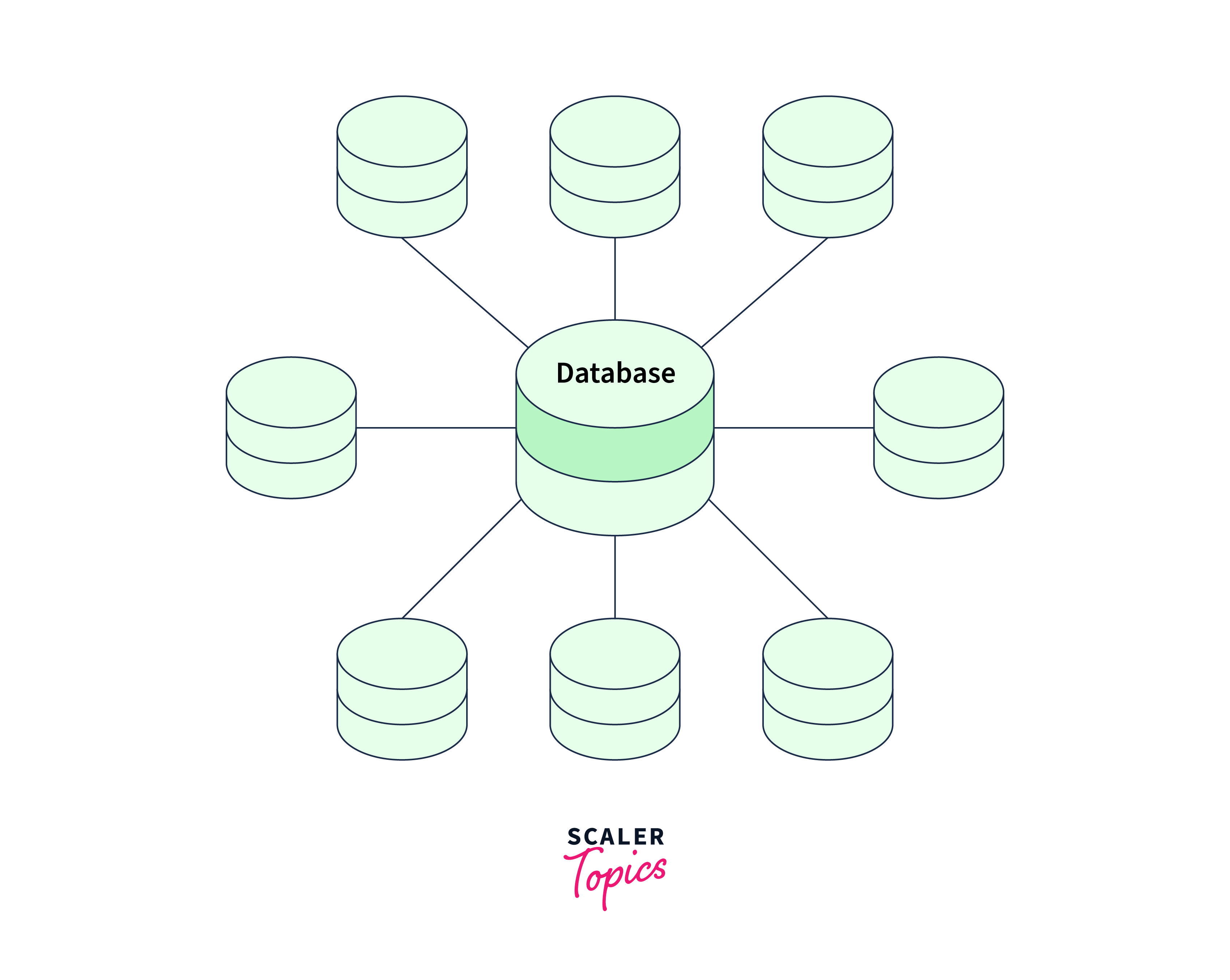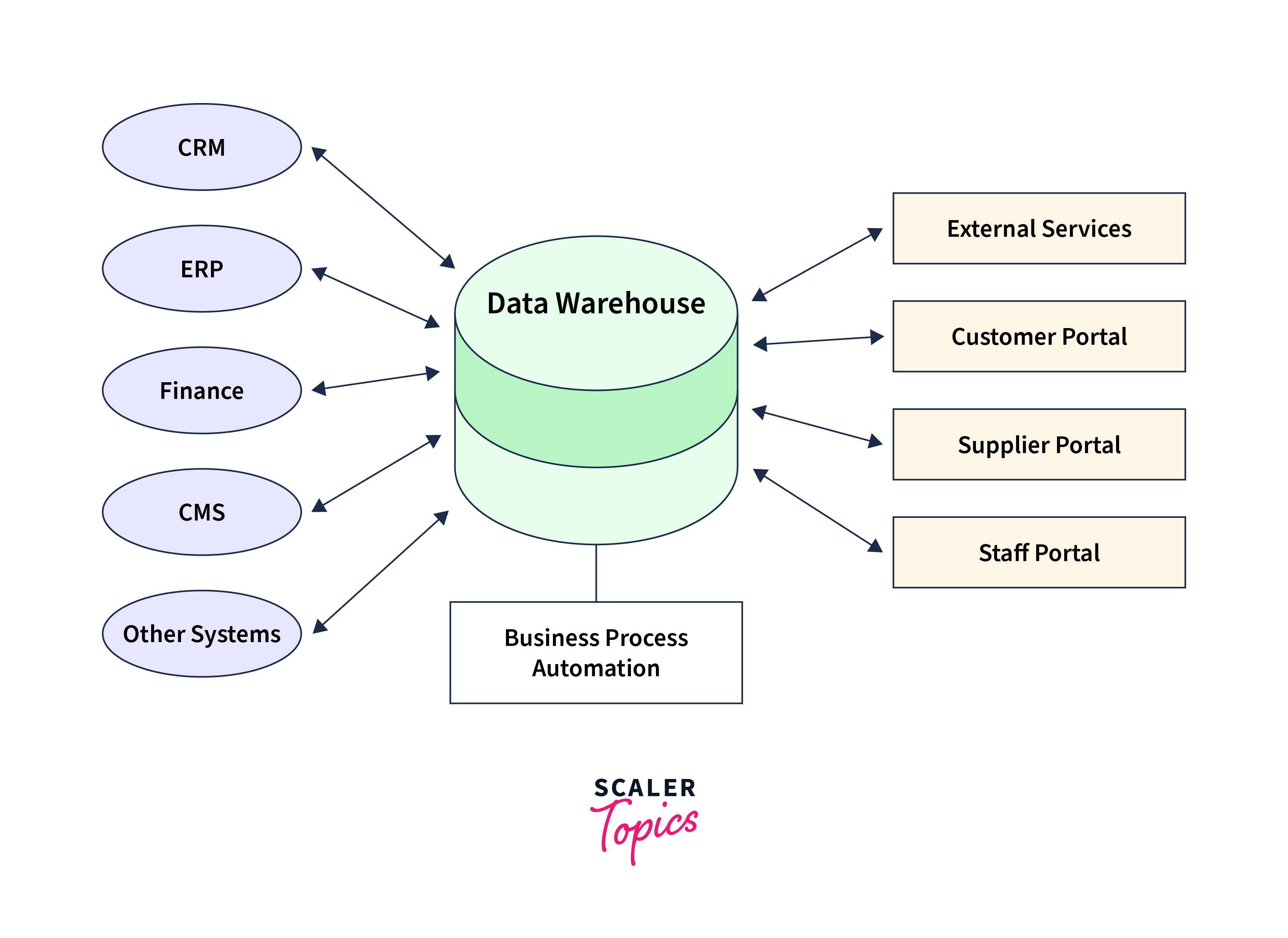Difference between Database and Data Warehouse
Overview
Databases store structured data for transactions, while data warehouses gather vast historical data from multiple sources. Unlike databases, data warehouses support intricate searches and trend analysis, aiding strategic decisions. While databases suit daily operations, data warehouses offer valuable insights, essential for leveraging their potential effectively.
What is a Database?
Before learning about the difference between a Database and a Data warehouse, let us learn about the database.
A database is a well-structured and well-organized data collection handled by a computer system. It entails storing, retrieving, and manipulating data for numerous uses. Databases are critical for efficiently handling enormous amounts of information and allowing data-driven decision-making.

Database Characteristics
- Structure:
Databases have a preset structure, generally in tables with rows and columns. This structure enables data storage uniformity and consistency. - Scalability:
Databases can manage massive volumes of data, from modest datasets to petabytes. Scalability guarantees that the database system can expand to handle growing data volumes. - Querying Capabilities:
Databases support complicated queries, allowing users to access specified information easily. Techniques like indexing and optimization improve query performance.
Why Use a Database?
- Data Management:
Databases centralize data storage, decreasing redundancy and inconsistency. This facilitates the updating, retrieval, and management of information. - Effective Data Retrieval:
Databases use indexing and caching technologies to speed up data retrieval, especially with large datasets. This improves app speed and user experience. - Transaction Processing:
Databases provide dependable transaction management, which is critical for applications such as e-commerce and banking. The ACID qualities (Atomicity, Consistency, Isolation, and Durability) provide transactional dependability.
To learn more, Database.
What is a Data Warehouse?
Before learning about the difference between a Database and a Data warehouse, let us learn about the data warehouse.
A data warehouse is a centralized repository designed for collecting, storing, and managing large volumes of data from diverse sources. It serves as a foundation for business intelligence and analytical processes.

Data Warehouse Characteristics
- ETL Processes:
Extract, Transform, Load (ETL) methods are used in data warehouses to collect data from diverse operating systems, transform it into a consistent format, and load it into the warehouse. This provides data quality, integrity, and interoperability across diverse data sources. - Performance Optimisation:
Querying and analysis are prioritized above transaction processing in data warehouses. They use indexing, segmentation, and materialized views to improve query efficiency, allowing them to respond quickly to complicated analytical queries. - Historical Data Storage:
Warehouses keep historical data, which allows for trend analysis and comparison across time. This capacity of archiving aids in identifying patterns, making informed decisions, and crafting long-term strategies.
Why Use a Data Warehouse?
- Data Consolidation:
Data warehouses reduce data silos and discrepancies by centralizing data from different sources. This creates a consolidated perspective of the organization's information, allowing for more accurate reporting and decision-making. - Enhanced Performance:
Data warehouses provide exceptional query performance via indexing, data splitting, and caching techniques. Users may quickly explore large datasets without sacrificing performance. - Strategic Decision-Making:
Historical data preservation gives decision-makers a thorough grasp of company trends, allowing them to develop informed plans.
Difference between Database and Data Warehouse
Let us now learn about the difference between a Database and a Data warehouse.
| Aspect | Database | Data Warehouse |
|---|---|---|
| Purpose | Primarily for transactional operations | Primarily for analytical operations |
| Data Type | Handles structured data | Handles structured and unstructured data |
| Schema | Generally follows a normalized schema | Often follows a denormalized schema |
| Data Volume | Usually handles smaller data volumes | Handles large volumes of historical data |
| Performance | Optimized for read and write operations | Optimized for complex queries and reporting |
| Data Freshness | Emphasizes real-time data | Emphasizes historical and periodic data |
| Query Complexity | Supports simpler, real-time queries | Supports complex, analytical queries |
| Data Transformations | Limited emphasis on data transformations | Involves significant data transformations |
| Usage | Used for day-to-day operations | Used for decision-making and analysis |
| Data Model | OLTP (Online Transaction Processing) | OLAP (Online Analytical Processing) |
Conclusion
- A database is built for efficient transactional processing, allowing for real-time data entry, retrieval, and updating.
- A data warehouse is a specialized platform for strategic decision-making. It collects data from several sources and transforms and aggregates it into a single, organized representation.
- A database prioritizes operating efficiency and the integrity of current data, whereas a data warehouse prioritizes analytics and the capacity to dive into enormous historical information.
- A data warehouse is a data powerhouse driving advanced analytics and informed decision-making through centralized historical data storage.
